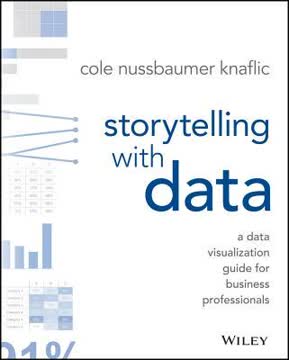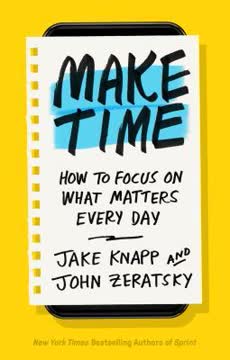Key Takeaways
1. Data is revolutionizing business: Every company is now a data company
Every two days we create as much data as we did from the beginning of time until 2003.
Data explosion. The volume and variety of data available to businesses have grown exponentially. This includes structured data (e.g., sales figures, customer records) and unstructured data (e.g., social media posts, video content). The Internet of Things (IoT) is further accelerating this trend, with billions of connected devices generating data continuously.
Business transformation. Data is transforming how companies operate, make decisions, and create value. It's enabling businesses to:
- Understand customers better
- Optimize operations
- Predict trends
- Personalize products and services
- Create new revenue streams
Universal relevance. Regardless of industry or size, every company can benefit from leveraging data. From retail and manufacturing to healthcare and finance, data-driven insights are becoming critical for competitiveness and growth.
2. Develop a clear data strategy aligned with business objectives
Having a clear data strategy is also critical when you consider the sheer volume of data that is available these days.
Strategic alignment. A data strategy should be directly tied to overall business goals. It should outline:
- Key business questions to answer
- Types of data needed
- How data will be collected, stored, and analyzed
- How insights will be used to drive value
Focused approach. Rather than trying to collect and analyze all available data, focus on what's most relevant to your specific objectives. This targeted approach helps avoid overwhelm and ensures resources are used efficiently.
Continuous evolution. As business needs and technologies change, the data strategy should be regularly revisited and updated. This ensures it remains relevant and continues to deliver value over time.
3. Use data to improve decision-making across the organization
Data provides the insights needed to make those decisions.
Data-driven decisions. By basing decisions on data rather than gut feeling or assumptions, businesses can:
- Reduce risk
- Identify new opportunities
- Allocate resources more effectively
- Respond faster to market changes
Key areas for application:
- Customer insights and market trends
- Financial forecasting and risk assessment
- Operational efficiency
- Product development
- Marketing and sales strategies
Democratizing data. Make relevant data and insights accessible to employees at all levels, empowering them to make informed decisions in their roles. This may involve implementing user-friendly dashboards and visualization tools.
4. Leverage data to optimize operations and enhance customer offerings
Using data, it is possible to optimize almost every aspect of how you run your business.
Operational optimization. Data can drive efficiencies across various business processes:
- Supply chain management
- Manufacturing and quality control
- Inventory management
- Predictive maintenance
- Fraud detection
- Human resources and workforce planning
Enhanced products and services. Data enables companies to:
- Personalize offerings based on customer preferences
- Develop new products or features based on usage patterns
- Improve existing products through performance data
- Create data-driven services as add-ons to physical products
Real-time adjustments. With the right infrastructure, businesses can analyze data in real-time and make immediate adjustments to operations or customer interactions.
5. Monetize data as a valuable business asset
Companies are now being bought and sold based on the data they have.
Data as an asset. Beyond internal use, data itself can become a valuable asset that increases a company's overall value. This can manifest in several ways:
- Increasing company valuation
- Creating new revenue streams by selling data or insights
- Enhancing existing products with data-driven features
Considerations for monetization:
- Identify unique or high-value data sets your company possesses
- Ensure proper data rights and permissions are in place
- Maintain data quality and relevance
- Consider privacy and ethical implications
Examples:
- John Deere selling agricultural insights to farmers
- Weather companies monetizing forecast data
- Retail loyalty programs selling customer insights to brands
6. Collect and analyze the right data, not all data
The importance of the right data, not all data.
Quality over quantity. Focus on collecting data that is directly relevant to your business objectives. This approach:
- Reduces storage and processing costs
- Simplifies analysis
- Improves the signal-to-noise ratio in insights
Data types to consider:
- Internal data (e.g., sales records, customer interactions)
- External data (e.g., market trends, social media sentiment)
- Structured data (easily organized in databases)
- Unstructured data (e.g., text, images, video)
Data minimization. Only collect and retain data that serves a specific purpose. This aligns with data protection regulations and reduces security risks.
7. Build the necessary technology infrastructure and competencies
Having identified your data capture needs, you need to think about where you will keep your data.
Infrastructure components:
- Data collection tools (e.g., sensors, APIs, web scraping)
- Data storage solutions (e.g., cloud storage, data warehouses)
- Data processing and analytics tools
- Data visualization and reporting platforms
Competencies to develop:
- Data science and analytics skills
- Programming and database management
- Business intelligence and data visualization
- Domain expertise to interpret data in context
Build vs. buy decisions. Consider whether to develop in-house capabilities or leverage external solutions:
- Open-source tools vs. commercial software
- Cloud-based services vs. on-premises infrastructure
- Hiring data specialists vs. upskilling existing staff vs. partnering with service providers
8. Ensure robust data governance and security measures
Falling foul of these can have disastrous consequences for your businesses reputation as well as leave you exposed to costly lawsuits.
Data governance framework. Establish clear policies and procedures for:
- Data ownership and accountability
- Data quality and integrity
- Data access and usage rights
- Compliance with regulations (e.g., GDPR, CCPA)
Security measures:
- Data encryption
- Access controls and authentication
- Regular security audits
- Incident response plans
- Employee training on data security best practices
Privacy considerations:
- Transparency in data collection and usage
- Obtaining proper consent
- Implementing data minimization practices
- Respecting individuals' rights (e.g., right to be forgotten)
9. Create a data-driven culture throughout the organization
Successful data strategy execution relies upon every layer of the company buying into the data strategy and understanding the importance of putting data at the heart of decision making and business operations.
Leadership commitment. Senior executives must champion the data strategy and lead by example in using data to inform decisions.
Skills development. Invest in training programs to improve data literacy across all levels of the organization. This may include:
- Basic data analysis skills for all employees
- Advanced analytics training for specialized roles
- Workshops on interpreting and acting on data insights
Incentives and processes. Align performance metrics and decision-making processes to encourage data-driven behaviors. This might involve:
- Including data-related KPIs in performance reviews
- Requiring data-backed justifications for major decisions
- Celebrating successes and learnings from data-driven initiatives
Continuous improvement. Foster a culture of experimentation and learning, where employees are encouraged to question assumptions and use data to test hypotheses.
Last updated:
FAQ
What's Data Strategy by Bernard Marr about?
- Focus on Data Utilization: Data Strategy emphasizes using data as a strategic asset to enhance decision-making, improve operations, and create new revenue streams.
- Big Data and IoT: The book explores how big data and the Internet of Things are transforming business practices, urging businesses to adapt to this data-driven landscape.
- Practical Framework: Marr provides a framework for developing a data strategy, including sourcing, collecting, and analyzing data effectively, aimed at leaders across various sectors.
Why should I read Data Strategy by Bernard Marr?
- Comprehensive Guide: It serves as a guide for understanding and implementing a data strategy, combining theoretical insights with practical examples.
- Expert Insights: Bernard Marr is a recognized expert in data and analytics, offering valuable insights for business leaders.
- Future-Proofing Your Business: The book prepares you for the evolving landscape of data-driven decision-making, helping to future-proof your business.
What are the key takeaways of Data Strategy by Bernard Marr?
- Data as a Strategic Asset: Data should be viewed as essential for competitive advantage, with companies that harness it effectively outperforming competitors.
- Importance of a Data Strategy: A clear data strategy aligned with business goals is necessary, including defining key questions and identifying the right data.
- Monetizing Data: The book discusses ways to monetize data, such as selling insights or enhancing products, to increase a company's value.
What are the best quotes from Data Strategy by Bernard Marr and what do they mean?
- “Data is changing our world...”: Highlights the transformative power of data in modern society and the urgency for organizations to adapt.
- “Every business must become a data business.”: Asserts the necessity of integrating data into all business operations to remain competitive.
- “The power of big data is not in the data itself...”: Emphasizes that the true value of data lies in its application, not just in collection.
How does Data Strategy by Bernard Marr define big data?
- Four Vs of Big Data: Marr defines big data through volume, velocity, variety, and veracity, distinguishing it from traditional data sets.
- Volume: Refers to the vast amounts of data generated, requiring new technologies for management and utilization.
- Velocity: Describes the speed of data creation and processing, enabling real-time analysis for informed decision-making.
What role does data governance play in Data Strategy by Bernard Marr?
- Data Ownership and Privacy: Discusses the importance of considering data ownership and privacy, ensuring compliance with legal and ethical standards.
- Data Security: Effective governance includes measures to protect data from breaches, crucial for maintaining trust and safeguarding information.
- Practicing Good Data Governance: Establishing clear policies maximizes data value while minimizing risks, including regular audits and updates.
How can I create a data strategy based on Data Strategy by Bernard Marr?
- Define Business Goals: Start by defining strategic goals and how data can help achieve them, guiding data collection and analysis.
- Identify Key Questions: Determine key business questions to focus on collecting relevant data.
- Sourcing Data: Decide on data types needed and establish a robust collection process.
How does Data Strategy by Bernard Marr suggest businesses can monetize their data?
- Selling Data Insights: Create revenue streams by selling access to data or insights, such as market trends and customer analytics.
- Enhancing Products and Services: Use data to improve products or create new offerings, increasing customer satisfaction and loyalty.
- Partnerships and Collaborations: Form partnerships to leverage data for mutual benefit, sharing insights or co-developing products.
What are the three core areas where data matters to business, according to Data Strategy by Bernard Marr?
- Improving Decision Making: Data enables better market and customer intelligence, enhancing product design and marketing strategies.
- Improving Operations: Optimizes internal processes like supply chain management, leading to cost savings and improved service delivery.
- Monetizing Data: Leverage data as a core asset, creating new revenue streams and increasing business value.
How does Data Strategy by Bernard Marr define the types of data?
- Structured Data: Organized in a predefined manner, easily searchable and analyzable, like databases and spreadsheets.
- Unstructured Data: Lacks a specific format, challenging to analyze, including text documents and social media posts.
- Semi-Structured Data: Contains both structured and unstructured elements, such as XML or JSON files.
How can organizations implement a data-driven culture according to Data Strategy by Bernard Marr?
- Leadership Buy-In: Senior management must commit to data-driven decision-making, fostering a culture that values data.
- Training and Development: Invest in training to enhance data literacy, empowering staff to utilize data effectively.
- Open Communication: Encourage dialogue about data initiatives, building trust and engagement among employees.
What role does analytics play in Data Strategy by Bernard Marr?
- Turning Data into Insights: Analytics examines data to extract insights, informing business decisions and driving improvements.
- Various Analytical Techniques: Covers methods like predictive analytics and data mining, applied based on business needs.
- Combining Analytics for Success: Integrating multiple approaches provides a comprehensive understanding, leading to informed decision-making.
Review Summary
Data Strategy receives mixed reviews, with an average rating of 3.80 out of 5. Many readers find it a good introduction to data-driven business practices, praising its accessibility and real-world examples. However, some criticize its lack of depth and practical guidance for implementation. The book is generally seen as more suitable for executives and those new to data strategy, rather than technical professionals. Readers appreciate the coverage of data governance and privacy concerns but note that some technological aspects may be outdated.
Similar Books








Download PDF
Download EPUB
.epub digital book format is ideal for reading ebooks on phones, tablets, and e-readers.










